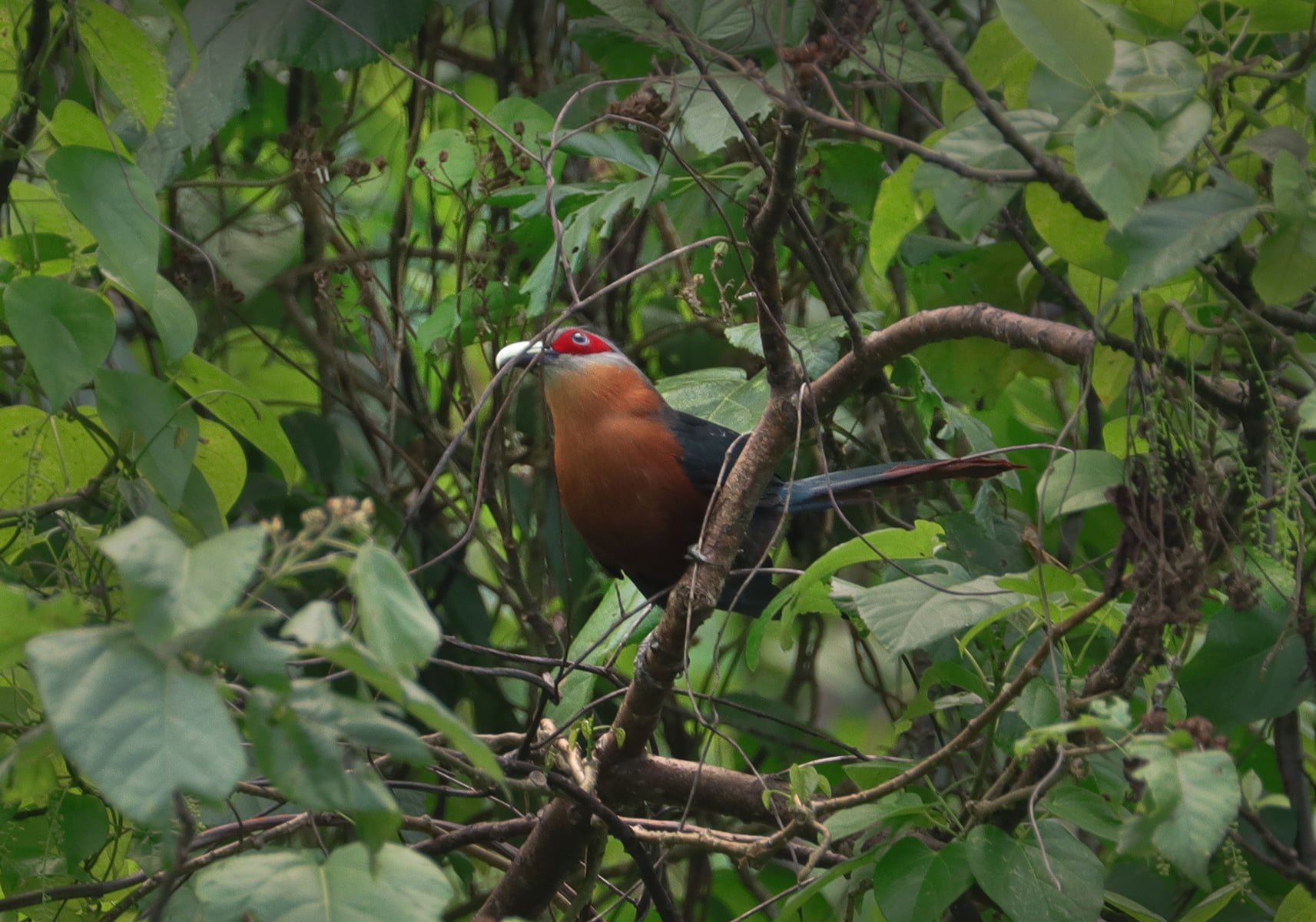Phaenicophaeus curvirostris has a large body that is 49 cm. Green beak, long tail with a distinct rusty red tip. The crown and nape are gray. Upper body pale green. The skin around the eyes is red. The lower body is rusty red, and there is no white color at the end of the tail, the legs are gray.
Description
Population Size
Unknown
Life Span
-
WEIGHT
-
LENGTH
49 cm
Ca
Carnivore
Di
Diurnal
Classification
KINGDOM
:
Animalia
PHYLUM
:
Chordata
CLASS
:
Aves
ORDER
:
Cuculiformes
FAMILY
:
Cuculidae
GENUS
:
Phaenicophaeus
SPECIES
:
Phaenicophaeus curvirostris


